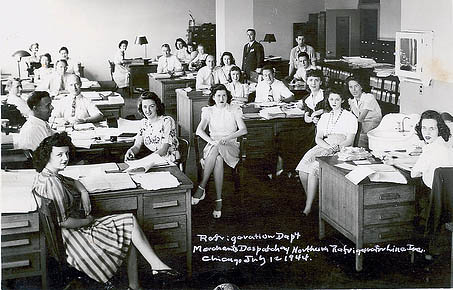Julie Blackmon is a photographer who was born in Springfield, Missouri on 1966. Blackmon studied art at Missouri State University where she became interested in photography. Growing up in a large family and having a family of her own has inspired Blackmon when creating work. Numerous different galleries including Robert Mann Gallery, Fahey Klein Gallery, and Gail Gibson Gallery represent Blackmon.
Blackmon’s first important project, Mind Games consisted of black and white images, which looked at childhood and how they play with real objects as well as using their imagination. In Blackmon’s next series Domestic Vacations Julie switched from black and white to color photographs, and also started working using digital technologies. Domestic Vacations is a series of photographs of family life how they are both disorderly and playful at times. Blackmon created digital collages with this series to visually display the chaos throughout this series. Blackmon’s new work is consisted to her Domestic Vacations work, it is heavily collaged influenced and contains a sense of chaos in the household.
Overall, Blackmon’s work relates to mine I am thinking of continuing with my project from last semester. i want to take my subjects out of the doll house and add chaos to the family images to display how each family is different and unique. Blackmon adds chaos and disorder to her images adding another involvedness to her images.
Quotes
"We live in a culture where we are both “child centered” and “self-obsessed.” The struggle between living in the moment versus escaping to another reality is intense since these two opposites strive to dominate." by Julie Blackmon
"I believe there are moments that can be found throughout any given day that bring sanctuary. It is in finding these moments amidst the stress of the everyday that my life as a mother parallels my work as an artist, and where the dynamics of family life throughout time seem remarkably unchanged." by Julie Blackmon
Quotes
"We live in a culture where we are both “child centered” and “self-obsessed.” The struggle between living in the moment versus escaping to another reality is intense since these two opposites strive to dominate." by Julie Blackmon
"I believe there are moments that can be found throughout any given day that bring sanctuary. It is in finding these moments amidst the stress of the everyday that my life as a mother parallels my work as an artist, and where the dynamics of family life throughout time seem remarkably unchanged." by Julie Blackmon
Julie Blackmon, Easy-Set Pool
20" x 20" Black and White, Mind Games
Julie Blackmon, Bratz Dolls
20" x 20" Black and White, Mind Games
Julie Blackmon, Bubble Girl
20" x 20" Black and White, Mind Games
Julie Blackmon, Camouflage
22" x 22" Pigment Ink Print, Domestic Vacations
Julie Blackmon, Birds at Home
22" x 22' Pigment Ink Print, Domestic Vacations
Julie Blackmon, Play Group
22" x 22" Pigment Ink Print, Domestic Vacations
Website: http://www.julieblackmon.com/index.cfm
Gallery: September 23, 2010, Robert Mann Gallery in New York, NY
Gallery: September 23, 2010, Robert Mann Gallery in New York, NY
Interview: I could not find although I found numerous videos of Julie Blackmon discussing her work.
http://www.youtube.com/watch?v=12nxR9_d1bo Works Cited
Julie Blackmon. 26 February 2011. 2011. <http://www.julieblackmon.com/index.cfm>.
YouTube: http://www.youtube.com/watch?v=12nxR9_d1bo
Julie Blackmon. Wikipedia. 26 February 2011. 2 December 2010. <http://en.wikipedia.org/wiki/Julie_Blackmon>.




























